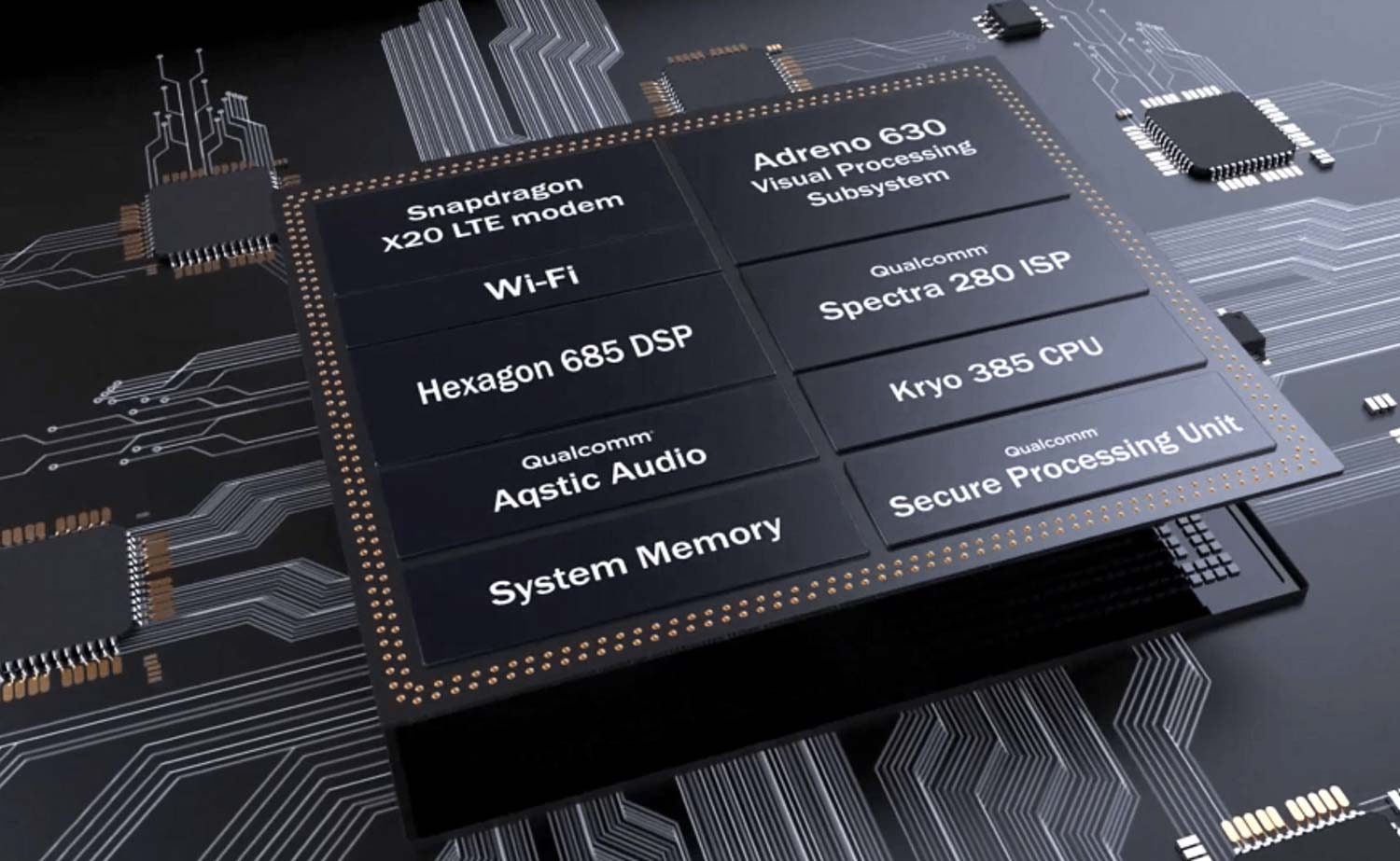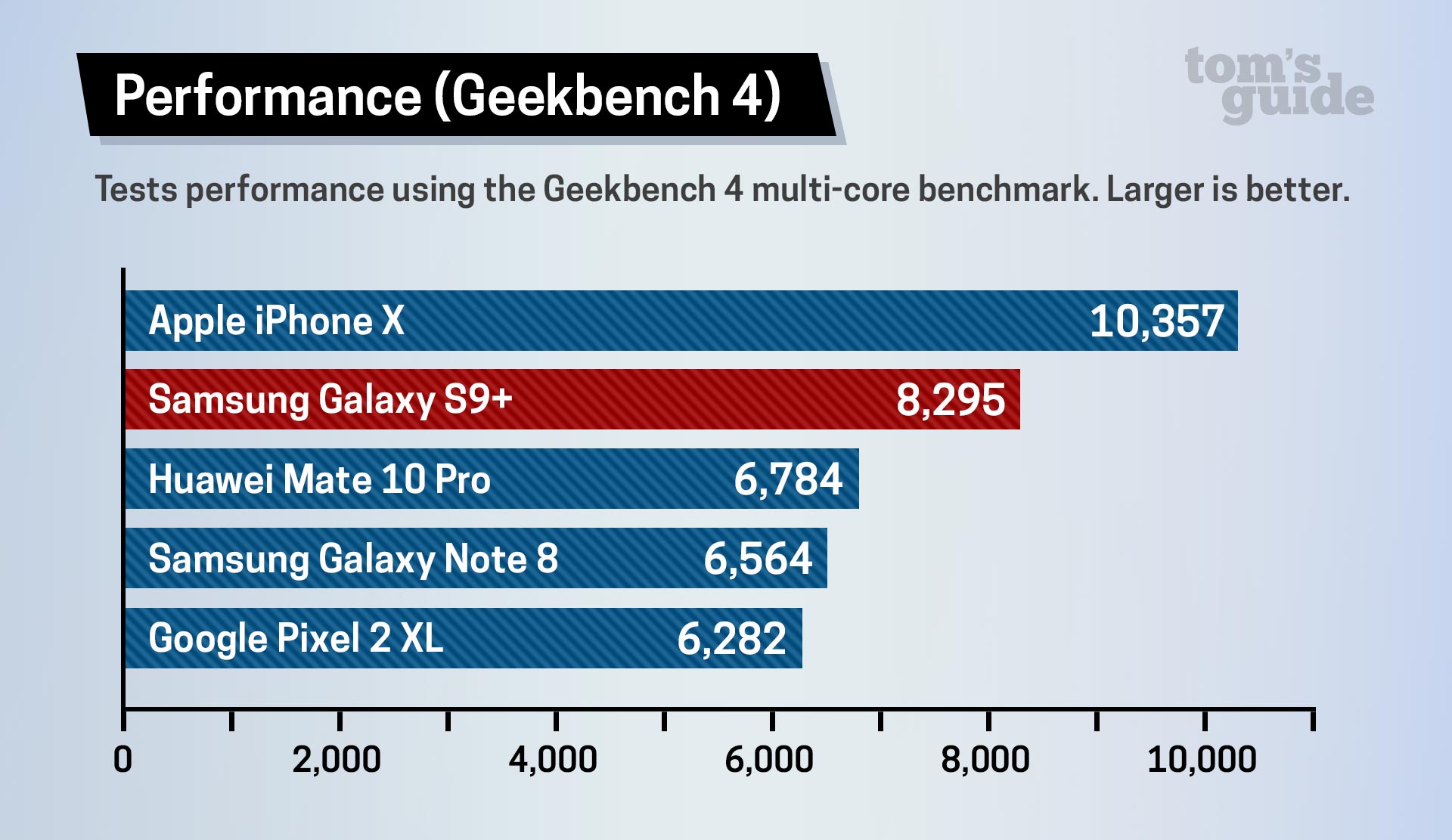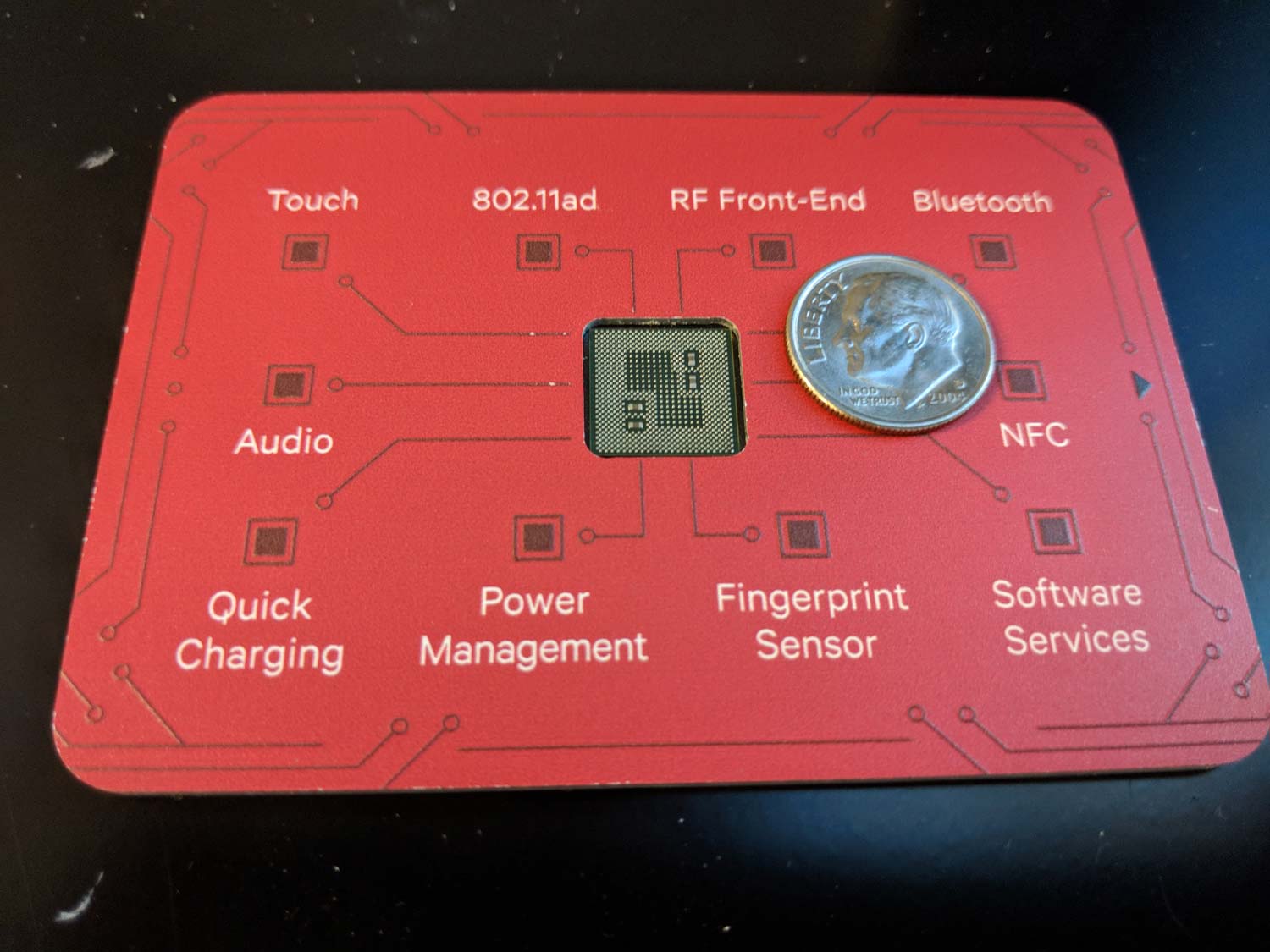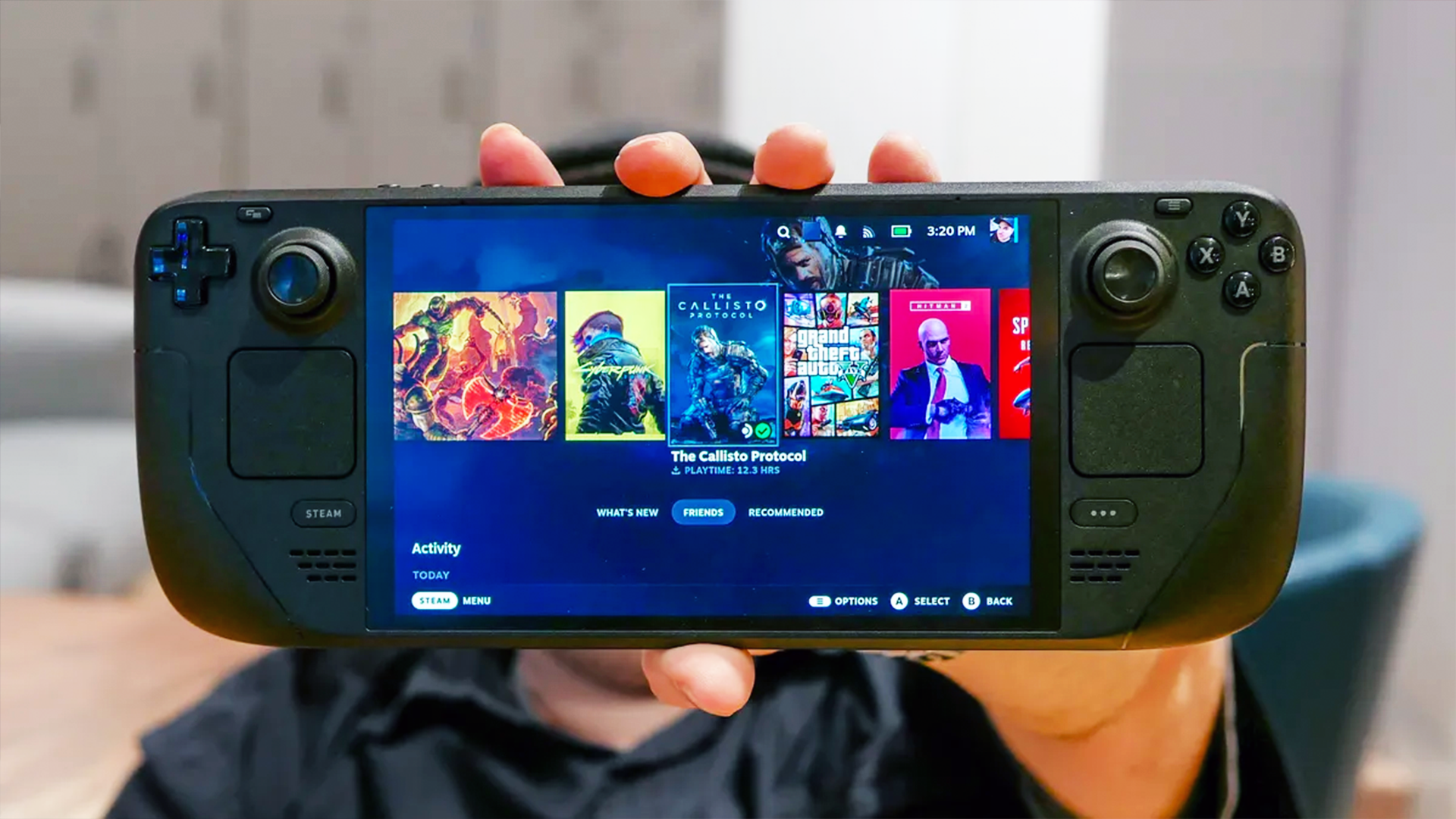Snapdragon 845: What It Means for Your Next Smartphone
Here are the latest details on Qualcomm's 845 mobile processing platform that will power top Android flagship phones this year.
Qualcomm may have taken the wraps off its Snapdragon 845 mobile processing platform in December, but we're learning more about the new chip, especially now that it's arrived in Samsung's Galaxy S9, with more phones on the horizon. In addition to the usual performance gains you'd expect from a new generation of mobile processor, the Snapdragon 845 impacts everything from your future phone's camera to how quickly you can download movies off a cellular network.

We've had a chance to benchmark the Snapdragon 845, first using a reference design device and then with the Galaxy S9+, and it's certainly a faster performer than last year's Snapdragon 835 (though it still lags behind the A11 Bionic chip powering Apple's latest iPhones in some aspects). You can also expect improved power management in the Snapdragon 845. From what Qualcomm has outlined, though, the most intriguing changes introduced by the Snapdragon 845 involve its image signal processor, its modem and the way it will handle technologies like virtual reality.
Our sister site AnandTech drills down into the nitty-gritty details about the Snapdragon 845 and how it's designed. But here's an overview of some of the changes Qualcomm's new mobile processing platform will introduce when it arrives later this year.
How Fast Will the New Processor Be?
The Snapdragon 845 features an 8-core Kryo 385 CPU running at up to 2.8GHz. An Adreno 630 serves as the graphics processor for the new system-on-chip.
MORE: Here Are the 10 Best Phones Available Now
Qualcomm promises a 25 percent improvement in what it calls "performance uplift" over the Snapdragon 835. That should mean faster app launches and smoother performance in processor-intensive apps. Look for a 30 percent improvement in graphics performance from the new GPU.
Now that we've had to benchmark a reference device powered by the Snapdragon 845 as well as the Galaxy S9+, we can confirm you'll see improved performance over phones running Qualcomm's last top-of-the-line mobile processor. The Galaxy S9+ scored 8,295 on the Geekbench 4 general performance test, which is a 32 percent improvement on the Galaxy S8's score on that same test. Released last year, the Galaxy S8 runs on the last-generation Snapdragon 835. The Kirin 970-powered Mate 10 Pro from Huawei is one of the fastest Android phones we've recently tested, and the Galaxy S9+ smoked its 6,784 score, too.

But the Snapdragon 845 inside the S9+ only closes some speed gap with Apple's latest iPhones, which feature the blazing-fast A11 Bionic processor. The iPhone X scored 10,357 in GeekBench 4 — much faster than the result we got from either the S9+ or our Snapdragon 845 reference device. The same was true in our real-word test where we convert a 4K video to 1080p. The Galaxy S9+ pulled off that task in 2 minutes, 32 seconds — much better than the 4:08 it took the Galaxy S8, but not nearly as fast as the iPhone X's 42 seconds.
Get instant access to breaking news, the hottest reviews, great deals and helpful tips.
It's worth noting that the Snapdragon finds itself on much more even footing with Apple's chip when it comes to graphics. The Galaxy S9+ actually finished ahead of the iPhone X in 3DMark's Sling Shot test, though the iPhone X had the better score in Sling Shot Unlimited.
This added power from the Snapdragon 845 comes with more efficient performance. Qualcomm says the Snapdragon 845 can improve power efficiency by 30 percent for tasks like games, video capture and mixed reality experiences. We haven't had a chance to test this for ourselves, but we did see a demo at Qualcomm headquarters where two phones (one with a Snapdragon 845 inside, the other with a Snapdragon 835) streamed the same 4K video at 60 frames per second. The 845-powered device consumed 20 percent less power while performing this task.
In the real world, that power savings has proven more elusive. The Galaxy S9+ lasted 10 hours, 59 minutes on our battery test, which involves continuous web surfing over an LTE network. That's in line with the 11:04 time the Galaxy S8+ turned in. In a sense, that's not surprising — both phones have a 3,500 mAh battery — but you might have hoped to see the 845-powered S9+ squeeze out more life from a full charge.
What About the Camera Capabilities?
The Snapdragon 845 includes a Spectra 280 image signal processor. It's capable of capturing images at up to 16 megapixels at 60 images per second, and it can capture HD slow-motion video at 480 frames per second.
Qualcomm sounds particularly proud of the ISP's HDR prowess, claiming the Spectra 280 can capture 64x more high-dynamic range color information compared to its predecessor. The inclusion of multi-frame noise reduction, the same technology Google employs in its HDR+ mode, should make low-light photos look better as well.
When Qualcomm was previewing the new Spectra ISP in the summer of 2017, it talked about three new modules that support iris authentication as well as active and passive depth sensing. The iris scanning will help with phone unlocking features while depth sensing can assist with everything from more realistic blur effects on portrait photos to improved performance for mixed reality apps.
Depth sensing will also enable Face ID-like facial recognition, if companies choose to use it. It could be more precise than what Apple's achieved too; whereas the iPhone X uses a web of 30,000 infrared dots for mapping purposes, Qualcomm's system uses 50,000.
What Modem Will the Snapdragon 845 Use?
A key component of the Snapdragon 845 is the new mobile processor's X20 modem. Like its predecessor, the X16, this new modem can deliver Gigabit LTE speeds of 1,000 Mbps — at least on cellular networks that are optimized to support it.
We got a taste of Gigabit LTE in late 2017, albeit with a Snapdragon 835 and an X16 modem on T-Mobile's network. In that demo, a Galaxy Note 8 reached speeds of 673 Mbps on Ookla's Speedtest app. The X20 figures to continue that faster connectivity, which should help with real-world activities like rapidly pulling files off a cloud server, downloading multi-gigabyte movies in minutes and seamlessly streaming data-rich virtual reality content.
What About Wireless Accessories?
Snapdragon 845 will bring multi-device broadcasting to Bluetooth 5, which is good news for smartphone owners forced to invest in wireless headphones because the 3.5-millimeter headphone jack has gone bye-bye. As more flagship phones arrive without a headphone jack, the improvement of Bluetooth will be incredibly crucial going forward.
New phones will be able to stream media to multiple connected devices simultaneously, which should greatly improve playback. Previous Bluetooth formats couldn't achieve this, which specifically complicated things for wireless earbuds: content had to be sent to one bud exclusively before being relayed to the second of the pair, leading to a slight delay.
What Other Features Can We Expect?
Other noteworthy additions in the Snapdragon 845 include a secure processing unit that Qualcomm says can add vault-like features to its existing security offerings for improved biometric support and encryption. This subprocessor is virtually sandboxed from the rest of the chip, and even has its own memory and power supply.

The new processing platform also supports Qualcomm's Quick Charge 4+ fast-charging technology, for delivering a 50 percent charge in 15 minutes. (We didn't see that with the Galaxy S9+, which got up to a 38 percent charge after half-an-hour.) A third-generation Hexagon Vector DSP promises improvements to artificial intelligence, potentially boosting the performance voice-powered digital assistants. And Qualcomm's Aqstic voice technology enables both improved keyword detection and lower-power voice processing on the Snapdragon 845, according to Qualcomm.
Additionally, smarter AI will allow for portrait mode shots without the need for a second lens, like how the Pixel 2 achieves the effect. Qualcomm reps demonstrated this capability for us, using a reference design device running on a Snapdragon 845. The blurred background effects appeared in real time on the device's display, allowing us to see what the shot would look like before we captured it.
Finally, if you need to run dual SIM cards in your smartphone of choice, the Snapdragon 845 will make your life a little easier. Currently, phones with two SIM cards on-board can only use LTE on one of them at a time, while the other is relegated to 3G. The new chipset will change that, allowing for LTE and Ultra HD Voice on both simultaneously.
When Will the Snapdragon 845 Arrive?
It's already here. And it's coming to more phone soon.
The first phone to include Qualcomm's new chip is the Galaxy S9 from Samsung. Unveiled last month at Mobile World Congress, Samsung's latest flagship goes on sale March 16, though you can order it now.
MORE: Top 10 Galaxy S9 Features
The S9 is the first device to feature the Snapdragon 845 in the U.S., just as last year's Galaxy S8 was the first to include a Snapdragon 835 processor. But other phones will include the mobile processor, too. One of the next devices to ship with the updated processor will be Sony's latest flagships, the Xperia XZ2 and XZ2 Compact. Those phones are slated for a global release on April 6. The ZenFone 5Z will include a Snapdragon 845, too, and that phone's expected to cost less than $500 when it ships in June. We expect other smartphone makers to add the processor to their phones, too.
Editors' Note: This article originally ran on Dec. 7 when Qualcomm announced the Snapdragon 845; we've updated it with the latest news on benchmarks and features.
Philip Michaels is a Managing Editor at Tom's Guide. He's been covering personal technology since 1999 and was in the building when Steve Jobs showed off the iPhone for the first time. He's been evaluating smartphones since that first iPhone debuted in 2007, and he's been following phone carriers and smartphone plans since 2015. He has strong opinions about Apple, the Oakland Athletics, old movies and proper butchery techniques. Follow him at @PhilipMichaels.
-
asian93 This new Qualcomm's 845 mobile processing platform brought interesting updates. Yet, the only blame which it will be taking is for limiting just to Flagship models.Reply

